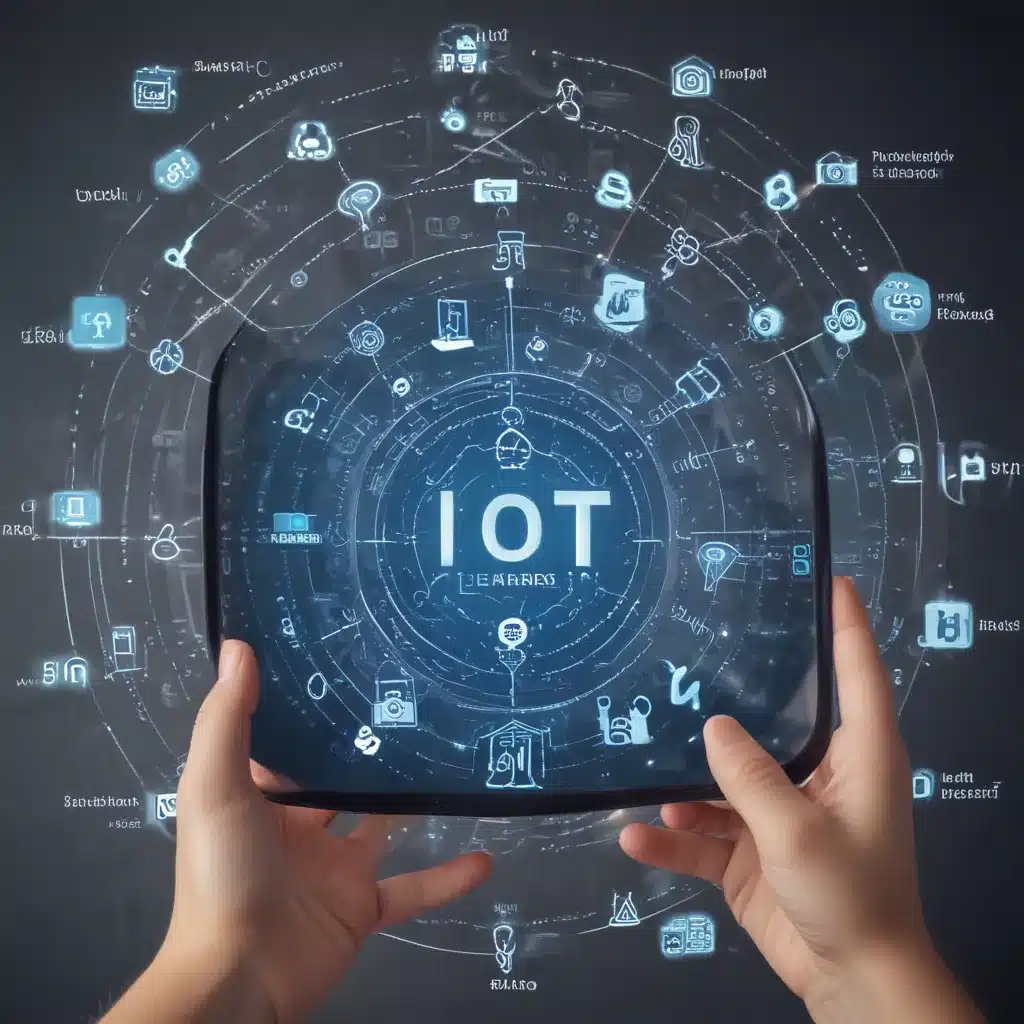Connecting the Dots: How Tiny Sensors are Transforming Industries
As I sip my morning coffee, I can’t help but marvel at the technological revolution unfolding all around me. It’s incredible how the humble sensor – once a simple device that merely converted physical variables into electrical signals – has evolved into the backbone of the Internet of Things (IoT). These tiny, intelligent gadgets are now seamlessly intertwined with our daily lives, gathering data, communicating, and reshaping entire industries.
Let’s take a step back and appreciate just how far these sensors have come. Not long ago, they were clunky, power-hungry, and required dedicated wiring to function. But thanks to advancements in microelectronics, wireless connectivity, and data processing, sensors have become the unsung heroes of the digital age [1]. Suddenly, they’re popping up everywhere – monitoring production lines, optimizing building operations, and even tracking the health of livestock. It’s as if these little devices have been empowered with a sixth sense, allowing them to “feel” the world around them and relay that information to the cloud.
One of the most fascinating aspects of this sensor evolution is how it’s disrupting traditional, low-tech industries. Remember when manufacturing plants were dominated by gears, pulleys, and good old-fashioned elbow grease? Those days are quickly fading as IoT sensors breathe new life into the sector. By attaching smart sensors to existing equipment, manufacturers can now monitor machine performance, predict maintenance needs, and optimize energy consumption – all with a few taps on a smartphone [2]. It’s a prime example of how small tech can unlock big data, transforming legacy industries into digital powerhouses.
Sensing the Unseen: IoT in Unexpected Places
But the IoT sensor revolution isn’t limited to the factory floor. In fact, some of the most ingenious applications are happening in the most unlikely of places. Take the world of commercial real estate, for instance. Facilities managers have long struggled with the manual, labor-intensive task of maintaining their buildings. But with IoT sensors, that’s all changing.
These sensors can now track everything from energy usage and air quality to the movement of people and assets within a structure. And the data they collect is a goldmine, allowing facility teams to identify inefficiencies, automate maintenance, and even enhance the tenant experience [3]. It’s a win-win-win scenario – cost savings for the building owner, a more comfortable environment for occupants, and a whole lot less work for the poor facilities manager.
But the sensor revolution doesn’t stop there. Even the age-old world of agriculture is getting a high-tech makeover. IoT sensors are now being deployed in fields and orchards, helping farmers optimize irrigation, monitor crop health, and even disrupt the mating patterns of pesky insects [4]. By combining sensor data with advanced analytics, growers can maximize yields, reduce waste, and become more sustainable – all while putting a serious dent in their operational costs.
And let’s not forget about waste management. Yes, even the humble dumpster is getting a smart upgrade. IoT sensors can now track capacity levels, temperature, and even compaction rates, allowing waste haulers to optimize their routes and reduce unnecessary pickups [5]. It’s a testament to the power of these tiny devices – they’re transforming the most mundane, low-tech industries into data-driven powerhouses.
The Future is (Sensor) Bright
As I sit here, contemplating the impact of IoT sensors, I can’t help but wonder what the future holds. Will these devices continue to infiltrate every nook and cranny of our world, gathering data and optimizing operations? The answer, my friends, is a resounding yes.
In fact, experts predict that by 2025, there will be a staggering 75 billion IoT devices connected worldwide [6]. That’s more than 9 devices for every person on the planet! And as the technology continues to evolve, the potential applications are truly mind-boggling. Imagine a world where your car can predict maintenance needs, your home can automatically adjust energy consumption, and your wearable can monitor your health in real-time.
But with great power comes great responsibility. As these sensors proliferate, the issue of data privacy and security will become increasingly critical. IoT developers will need to prioritize robust cybersecurity measures to protect sensitive information and prevent malicious attacks. And policymakers will have to navigate the complex ethical and legal implications of this brave new world of ubiquitous sensing.
Still, I can’t help but feel excited about the future. IoT sensors are not just transforming industries – they’re ushering in a new era of unprecedented efficiency, sustainability, and innovation. And who knows, maybe one day, these tiny devices will even be able to predict the weather or detect impending natural disasters. The possibilities are endless, and I, for one, can’t wait to see what the future holds.
References:
[1] Journal of Big Data, 2019. https://journalofbigdata.springeropen.com/articles/10.1186/s40537-019-0268-2
[2] Information-Management.com, 2017. https://www.linkedin.com/pulse/iot-sensors-giving-low-tech-industries-high-tech-benefits-yaniv-vardi/
[3] Tech Briefs, 2018. https://www.techbriefs.com/component/content/article/33212-smart-sensor-technology-for-the-iot
[4] Forbes, 2017. https://www.forbes.com/sites/bernardmarr/2017/02/07/iot-and-big-data-at-caterpillar-how-predictive-maintenance-saves-millions-of-dollars/
[5] Spiceworks, 2018. https://www.spiceworks.com/tech/big-data/guest-article/the-big-data-iot-relationship-how-they-help-each-other/
[6] NC State University, 2022. https://cals.ncsu.edu/news/nc-state-teams-up-with-sas-and-microsoft-to-predict-plant-disease-and-tackle-food-recalls/













